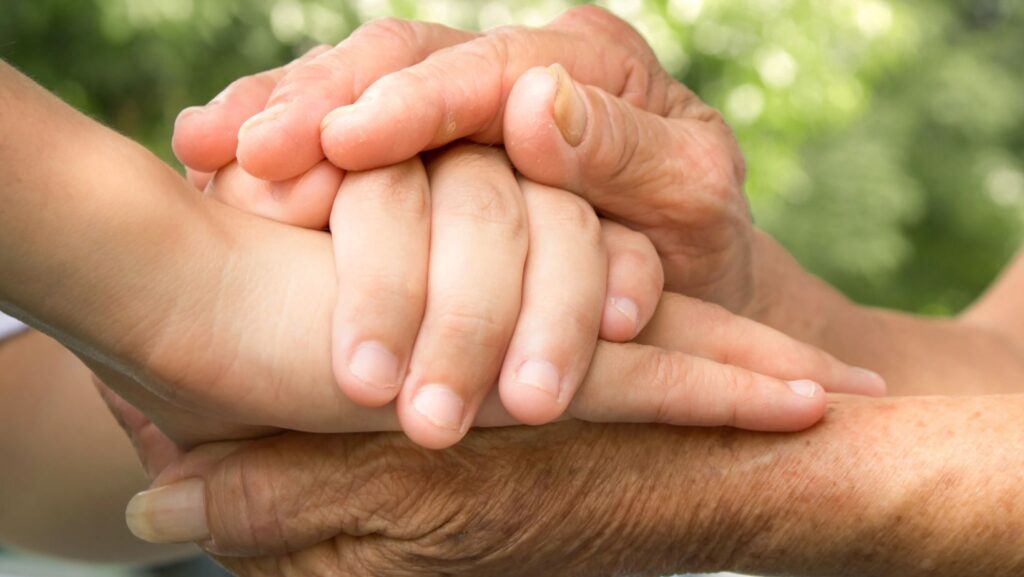Supporting a loved one through their mental and physical health challenges can be daunting. Especially when you’re not sure where to start or what to do.
The good news is mindfulness practices are one of the most effective ways to support family mental health – and the research backs it up.
In this guide, you’ll learn practical mindfulness techniques that can change the way your family approaches stress, anxiety and wellbeing.
Let’s get into it.
You’ll learn:
● Why mindfulness is effective for family mental health ● The relationship between mental and physical health ● 5 Practical mindfulness techniques for families ● How to make mindfulness a habit
Why Mindfulness Is Effective For Family Mental Health
Mindfulness might seem like a buzzword… But the data doesn’t lie.
Recent studies have shown that 79% of adults have said that meditation and mindfulness has improved their overall health and wellbeing. That’s not a tiny percentage.
So what makes mindfulness so great for supporting a family member through their mental and physical health challenges? What’s so unique about mindfulness?
Here’s the secret: Mindfulness works on your brain. It trains your brain to stay in the present moment, rather than ruminating about the future or the past.
This is a skill that all families struggle with. But it’s especially helpful when a loved one is struggling with mental health or addiction issues.
If your family member is struggling with depression, anxiety or substance use, they might have co-occurring disorders (COD). This is when an addiction disorder is present with a mental health disorder.
Treatment for co-occurring disorder is extremely important. You might want to learn about co-occurring disorder treatment options that address multiple conditions together through an integrated approach.
The great news? Mindfulness works for everyone. Even if a loved one is the one that needs more support, you can all be on the same mindfulness journey together.
The Relationship Between Mental And Physical Health
Here’s a little secret that not a lot of people talk about – your mental and physical health are linked.
Stress, anxiety, depression… It can all present in both your mind and body.
Have you ever had a headache because you were worried? Tummy troubles from nerves? Woken up after a restless night unable to calm your mind?
It happens to the best of us. But it’s even more relevant when you’re caring for a family member.
Mindfulness can help with both mental and physical symptoms. When you calm your mind, you naturally release tension in the body.
Mindfulness is about practicing presence – taking care of your mental and physical health in the here and now so you can be there for your loved one.
5 Practical Mindfulness Techniques For Families
Ready for the good stuff?
Here are some practical mindfulness techniques that your family can use to take care of your mental health.
Mindful Breathing
It sounds simple, but this mindfulness technique is seriously powerful.
Schedule 5x minutes every day for the whole family to sit and practice mindful breathing.
Sit comfortably, close your eyes and focus on your breath. Allow thoughts to come and go. Always return your attention to your breath.
By slowing down your breathing, you calm down the nervous system and activate your parasympathetic response. (Translation: Relax!)
Body Scan Meditation
This mindfulness technique can be really helpful to release tension in the body and re-connect to your physical sensations.
Starting at the toes and working up through the body, bring attention to sensations in each part of the body. Observe. Don’t judge.
This practice only takes about 10-15 minutes and is really helpful before bed.
Eat Mindfully
This is one of my favourite ways to build mindfulness into daily family life.
Choose one meal per week to be your family’s mindful meal.
This means no phones, no TV, no rushing. Just eating.
Bring your attention to the colours, smells, textures and tastes of your food.
This is a great way to build family togetherness while practising mindfulness.
Walking Meditation
As I mentioned above, mindfulness can be a really great practice to support both your mental and physical wellbeing.
Walking meditation is a great way to add mindfulness into your family’s day while getting a little exercise.
You can take a short walk and the goal isn’t the exercise – it’s simply noticing.
Feel your feet connecting with the ground. Notice the sounds around you. Use it as an opportunity to check in with each other without any pressure.
Practice Gratitude
Wrap up each day as a family by sharing one thing that you’re grateful for.
According to recent statistics, 8 in 10 parents and youth cited loneliness as one of the top concerns when it came to their mental health.
Gratitude practices are proven to decrease depression and can be an excellent practice to shift your perspective when things are difficult.

How To Make Mindfulness A Family Habit
As with anything, the most difficult part of mindfulness is sticking to it long-term.
Families often start off strong but then life gets in the way.
Life gets busy, stress builds up, and old habits resurface.
Here’s how to make mindfulness a regular part of family life:
Make your mindfulness habit ridiculously small.
Commit to just 2x minutes a day, instead of 30x minutes a day. Once the tiny habit is second nature, start increasing.
Pair it with an existing habit. Practice mindful breathing while your coffee brews. Or a quick body scan before dinner. Tuck the kids in and share gratitudes.
Make it non-negotiable. Brushing your teeth is non-negotiable. So should mindfulness. Make it part of your morning or evening routine, come rain or shine.
Make use of technology. Mindfulness apps like Calm or Headspace are great when you don’t feel like getting your mindfulness on. Or set reminders on your phone for practice times.
If your family member is in a mental health crisis, mindfulness should be used in combination with professional help.
The best ways to create a supportive environment include listening without judgement, learning about their condition and trying mindfulness practices together.
Conclusion: Building Your Family’s Mental Health Foundation
Helping a loved one with their mental and physical health is not a one-time fix. It’s a journey.
A journey that takes time, consistency and patience.
The benefit? Well, it’s huge.
Families that make mindfulness a part of their daily life have reported lower stress levels, improved communication, stronger emotional connections and overall better health.
The techniques above – mindful breathing, body scan meditation, mindful eating and gratitude – provide a great foundation.
Mindfulness won’t cure your family of every mental health problem.
But it will give you the tools to better manage stress, stay present and support each other in both difficult and joyful times.
Remember: Supporting a loved one with their mental and physical health starts with setting up an environment where wellbeing is prioritised.
Mindfulness can help make that a reality, one day at a time.
Start with one technique from this article.
Practice it consistently for two weeks.
Then add another.
Soon, mindfulness will become a natural part of your family’s fabric – a way to bring calm and connection to both the challenging times and the happy moments.


